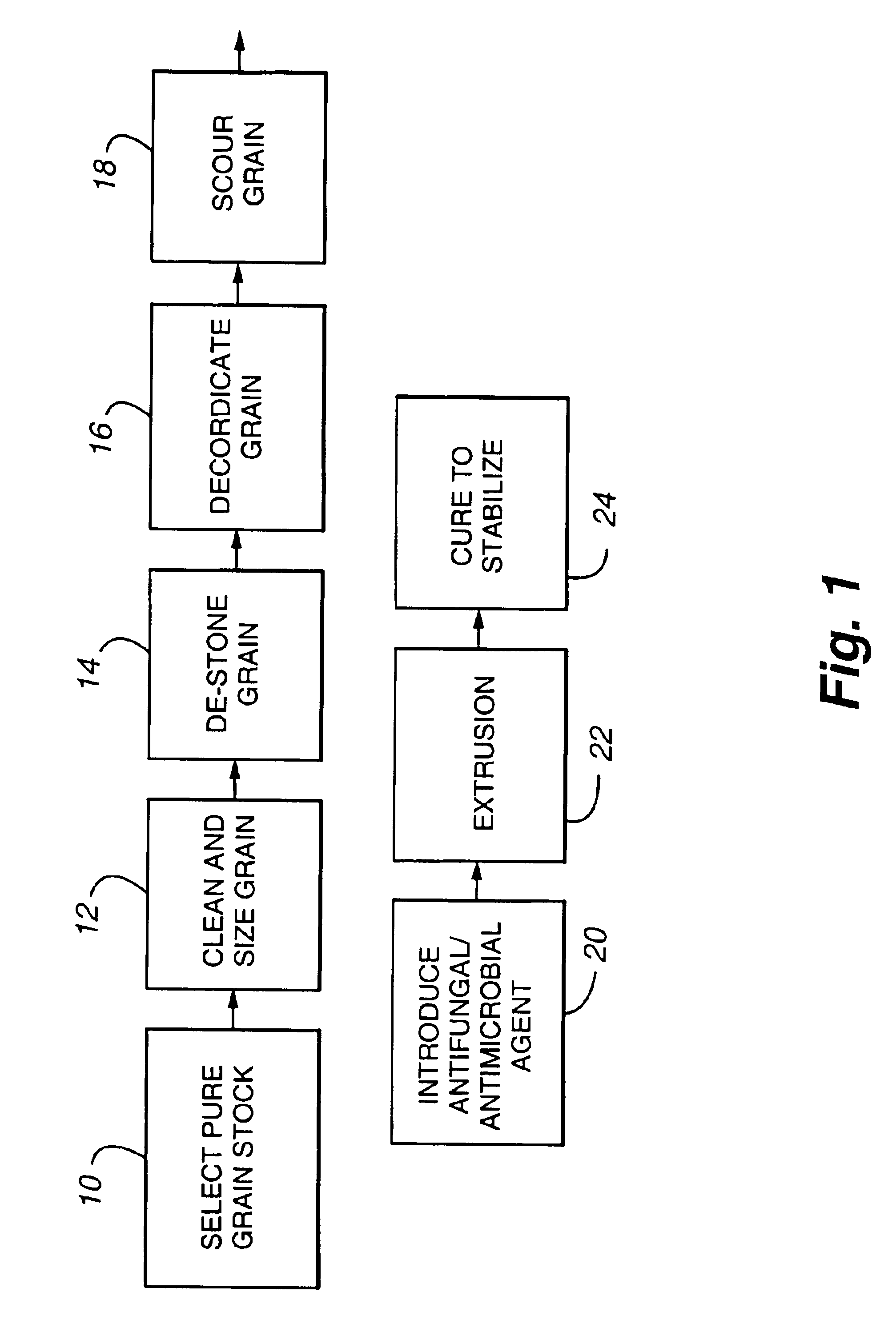Mold inhibitor integrated within a matrix and method of making same
a technology of mold inhibitor and matrix, which is applied in the field of mold inhibitor integrated within a natural matrix, can solve the problems of insufficient ventilation of the base and crawl space, inability to ventilate the crawl space, and inability to manufacture, etc., and achieves the effects of easy manufacturing, easy introduction into the crawl space or other confined area, and easy spread
- Summary
- Abstract
- Description
- Claims
- Application Information
AI Technical Summary
Benefits of technology
Problems solved by technology
Method used
Image
Examples
Embodiment Construction
[0021]Referring to FIG. 1, basic steps in the method of making the matrix of the present invention are illustrated. In a first step at block 10, preferably, a pure stock of a milo grain is selected. Although there is no specific hybrid of milo which is required for the product and method of the present invention, it is desirable to choose a single pure stock grain because this pure stock grain is advantageous in creating consistency and repeatability of the extrusion process. Through testing, it has been found that a few particular hybrids of milo are particularly adapted for extrusion. Three hybrid varieties which have shown great success include Triumph 65G, Asgrow Seneca; and Dekalb 5400. These three hybrid varieties are well known grain stocks for use in animal feed, and are commercially available in the U.S. Although these three hybrids are preferred, it shall be understood that there may be a number of other hybrid varieties of milo which are also adapted for consistent and re...
PUM
| Property | Measurement | Unit |
|---|---|---|
| pressure | aaaaa | aaaaa |
| weight | aaaaa | aaaaa |
| composition | aaaaa | aaaaa |
Abstract
Description
Claims
Application Information
 Login to View More
Login to View More - R&D
- Intellectual Property
- Life Sciences
- Materials
- Tech Scout
- Unparalleled Data Quality
- Higher Quality Content
- 60% Fewer Hallucinations
Browse by: Latest US Patents, China's latest patents, Technical Efficacy Thesaurus, Application Domain, Technology Topic, Popular Technical Reports.
© 2025 PatSnap. All rights reserved.Legal|Privacy policy|Modern Slavery Act Transparency Statement|Sitemap|About US| Contact US: help@patsnap.com

